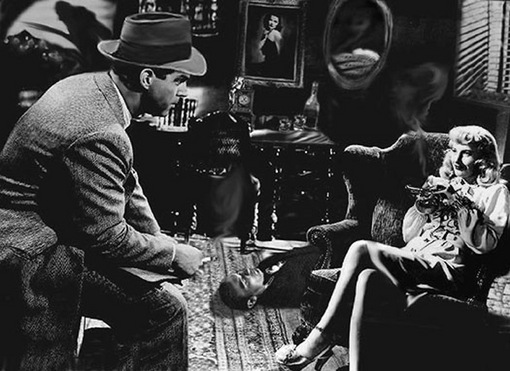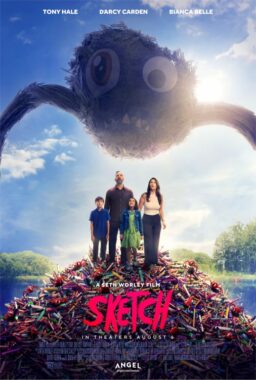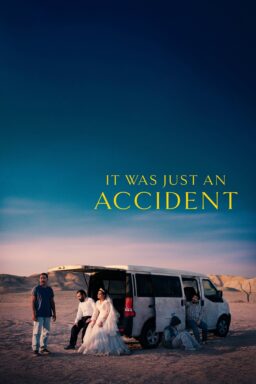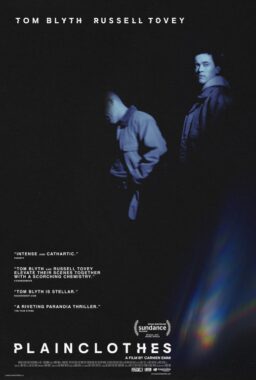Please consider this my contribution to the For the Love of Film (Noir) blogathon, now in progress.
This room is haunted. By shadows from out of the past… and by my failure to ever complete the thing. I notice I had pledged to finish it by September, 1999. Looks like the date may have slipped. There’s one way to enter The Dark Room, and that’s to go through here. (There is, in the tradition of noir, no way out — except through the gift shop.) I originally thought of it in 1995 as a film noir feature for the CD-ROM movie encyclopedia I was editing, Microsoft Cinemania. But it wasn’t something we could do in the Cinemania format at the time. Not until I left Microsoft and launched Jeeem’s CinePad in 1998 did I try to build the thing myself.
There are (at least) three ways to explore The Dark Room, as explained in the room. But two of them you can do from right here: 1) Take a look at what’s going on in the room. How many of the elements (and the films from which they’ve been lifted) can you identify? Leave ’em in comments below. 2) If you like to spin stories (and webs), maybe you’d like to come up with a noirish tale or situation based on what you see in this image. What’s the rumpus? Who’s the dead guy? Who’s doing what to whom? How did things come to this (is it time for a narrated flashback?), and what will happen next? Again, if you feel like letting your imagination roam, please share your scenarios in comments.
The third method of investigation, and the one for which The Dark Room was originally built, can only be discovered if you furtively scuttle over to the actual room (stay in the shadows!) and explore it with your curor. Click on objects and you may discover trap-door mini-essays about how they have been used in film noir. Some of them lead nowhere (or, worse, to my little Buster Keaton “Under Construction” symbol) but those that produce results will also tell you what movies the original images came from. I can tell you now that the dead ends include some of the rather prominent elements in the frame: the fall guy, the femme fatale, the gun, the fetish, the obsession, books/stories… and blackness. At the very bottom of this entry you’ll find a list of the more productive avenues of exploration.
A couple notes: First, when this was designed, the most common computer display resolutions were still in the vicinity of VGA (640×480) and SVGA (800×600), which means that the room looked a helluva lot larger. In fact, it took up most of the screen. (Go ahead, change your screen resolution and take a trip back in time — it’s like slipping from 1.85:1 into good ol’ 1940s Academy Ratio!)
Finally, I know that in true Frog the parenthetical subtitle should be “la chambre noire” with an “e” on the end (“the dark room” or a darkroom or a camera obscura), but of course I was going for the “film noir” connection so, please, pardon my French.
From the introduction to The Dark Room:
What is wrong with this picture?
It looks as if everything has gone kind of crazy.
Mysterious shadows slice the world into jagged fragments
whether it’s day or night. Meanwhile, in the corners of the room, blackness itself collects in thick pools like congealing blood.The walls are closing in
like a big steel trap snapping shut in slow motion.
Paranoia and dread hang heavily in the air…Welcome.
You’ve just entered the world of film noir,
where nothing is what it seems,
and no one can be trusted.You are invited to prowl around the room above
and see what you can find….There are fifteen noir archetypes (seventeen if you count doubles) represented in The Dark Room.
Each one explains a small piece of the riddle,
a fragment of the crazy jigsaw puzzle that is film noir.When you spot one, click on it and you’ll be taken to a place where the mysteries behind these cryptic symbols will be revealed. You’ll find out just how each of them contributes to the shadowy aesthetics, murky morality, unforseen pitfalls, and bitter twists of fate that are among the hallmarks of this sinister corner of the cinema.
You’ll also find classic stills that illustrate how these key elements — objects and artifacts, character types, visual motifs, recurring themes and situations — figure into some of the greatest films noir. And you’ll even discover the secret origins of the enigmatic items in The Dark Room itself, all of which were pinched (in the dead of night) from various movies of the ’30s, ’40s, and ’50s
(most, though not all, of them noir).Remember: film noir is not a genre, and is not constricted by genre. Detective movies, gangster pictures, science-fiction films, even westerns take place in noir territory. Likewise, it’s more than just a visual style, or a whodunnit spiked with hard-boiled attitude. Film noir is an aesthetic, a cynical and disturbing way of looking at the repressed nightmare lurking beneath the post-war American Dream.
And after you’ve sifted through all the clues, maybe you can help me piece together the answer to that troubling question at the top of this page: What is going on in The Dark Room? Who is betraying whom, and why? What does the composition of the shot tell you about the dynamics of the situation? I came up with a theory or two while I was building the room, but I’d really love to hear your ideas….
SPOILERS: Among the elements containing links are: the blinds, smoke(s), the mirror, booze, the hat, the window, the corpse, the clock, the bait, and shadows (of Expressionism). There may be more — I don’t remember. If you find some others, please let me know.
By all means, read Paul Schrader’s essential Notes on Film Noir, originally published in Film Comment in 1972:
The fundamental reason for film noir’s neglect, however, is the fact that it depends more on choreography than sociology, and American critics have always been slow on the uptake when it comes to visual style. Like its protagonists, film noir is more interested in style than theme; whereas American critics have been traditionally more interested in theme than style.
American film critics have always been sociologists first and scientists second: film is important as it relates to large masses, and if a film goes awry it is often because the theme has been somehow “violated” by the style. Film noir operates on opposite principles: the theme is hidden in the style, and bogus themes are often haunted (“middle class values are best”) which contradict the style. Although, I believe, style determines the theme in every film, it was easier for sociological critics to discuss the themes of the western and gangster film apart from stylistic analysis than it was to do for film noir….
Because film noir was first of all a style, because it worked out its conflicts visually rather than thematically, because it was aware of its own identity, it was able to create artistic solutions to sociological problems. And for these reasons films like “Kiss Me Deadly,” “Kiss Tomorrow Goodbye” and “Gun Crazy” can be works of art in a way that gangster films like “Scarface,” “Public Enemy” and “Little Caesar” can never be….











